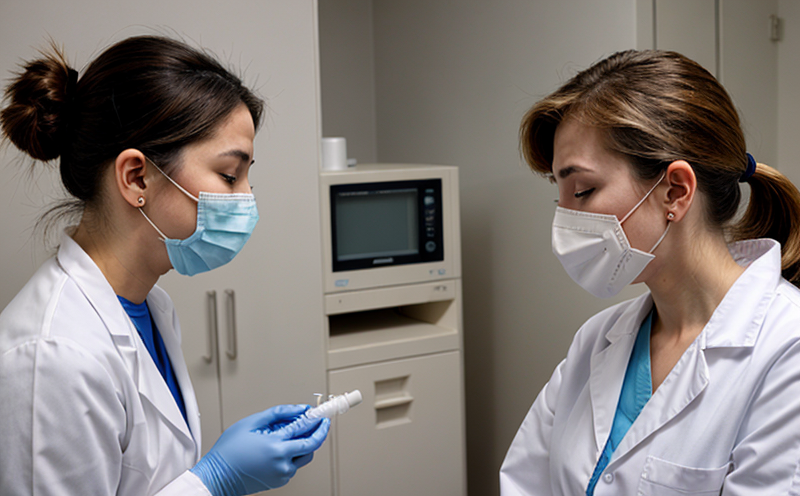Dog Allergen Protein Testing in Household Environments
The testing of dog allergen proteins in household environments is a critical component of allergy and immunology research aimed at understanding, diagnosing, and mitigating allergic reactions. Dog dander contains proteins that can trigger allergies in sensitive individuals. These proteins are the primary allergens responsible for respiratory issues such as asthma and rhinitis.
Standardized testing ensures accurate identification and quantification of these allergens, which is essential for developing effective interventions and treatments. The process involves collecting samples from various household locations (e.g., carpets, upholstery, bedding) and analyzing them using advanced analytical techniques to identify the presence and concentration of dog allergen proteins.
The key challenge in this testing lies in the variability of environmental conditions such as humidity, temperature, and cleaning practices. Proper specimen preparation is crucial for obtaining reliable results. This includes minimizing cross-contamination between samples and ensuring that the collected material accurately represents the environment being tested.
Accurate quantification of dog allergen proteins allows healthcare professionals to recommend appropriate measures for reducing exposure levels in homes where individuals are known to be allergic. This can include improving ventilation, using air purifiers, selecting hypoallergenic bedding materials, and employing regular cleaning practices.
The testing procedure typically involves the following steps:
- Sampling: Collection of dust samples from different areas of the home (e.g., carpets, sofas).
- Preparation: Isolation of allergen proteins using specialized extraction methods.
- Analysis: Detection and quantification through advanced analytical techniques like ELISA or Western blotting.
Understanding these steps provides insight into the complexity involved in conducting reliable tests. Proper specimen preparation is paramount, as even minor variations can lead to inaccurate results. Advanced analytical methods ensure precise detection of allergen proteins, enabling healthcare providers to make informed decisions about treatment options and preventive measures.
| Use Case/Application Example | Description |
|---|---|
| Dog Allergen Protein Quantification in Patient Homes | Testing to determine allergen levels before and after implementation of mitigation strategies. |
| Air Purifier Effectiveness Studies | Evaluating the ability of air purifiers to reduce allergen concentrations over time. |
| Hypoallergenic Product Development | Assessing the effectiveness of hypoallergenic materials in reducing allergen exposure. |
The importance of these tests cannot be overstated, especially for individuals suffering from severe allergies. By accurately quantifying dog allergen proteins in household environments, healthcare professionals can provide more targeted advice and support to their patients.
Why It Matters
Dog allergen protein testing is essential for several reasons:
- Health Impact: Exposure to dog dander proteins can exacerbate respiratory conditions like asthma and rhinitis in sensitive individuals.
- Precision in Diagnostics: Accurate quantification of allergens aids in diagnosing and managing allergic reactions more effectively.
- Treatment Planning: Understanding the levels of dog allergen proteins helps tailor treatment plans to minimize exposure and alleviate symptoms.
- Product Development: Manufacturers can use test results to develop products that reduce allergen release into living spaces.
The ability to quantify these proteins precisely is vital for improving quality of life among allergy sufferers. By providing actionable data, healthcare professionals can recommend interventions that significantly impact the severity and frequency of allergic reactions.
Industry Applications
- Healthcare Providers: Using test results to advise patients on reducing exposure to dog allergens in their homes.
- Laboratories: Conducting research and developing new methods for quantifying allergen proteins.
- Hospitality Industry: Implementing policies that minimize allergen presence in shared living spaces.
- Manufacturers of Allergy-Related Products: Using test data to improve product design and effectiveness.
The testing of dog allergen proteins is not only beneficial for individuals with allergies but also plays a crucial role in broader healthcare practices. It contributes to the development of more effective treatments and preventive measures, ultimately enhancing overall public health.
Use Cases and Application Examples
| Use Case/Application Example | Description |
|---|---|
| Dog Allergen Protein Quantification in Patient Homes | Testing to determine allergen levels before and after implementation of mitigation strategies. |
| Air Purifier Effectiveness Studies | Evaluating the ability of air purifiers to reduce allergen concentrations over time. |
| Hypoallergenic Product Development | Assessing the effectiveness of hypoallergenic materials in reducing allergen exposure. |
These applications underscore the importance of accurate and reliable testing methods. By providing precise quantification, these tests enable healthcare professionals to make informed decisions that significantly impact patient outcomes.





